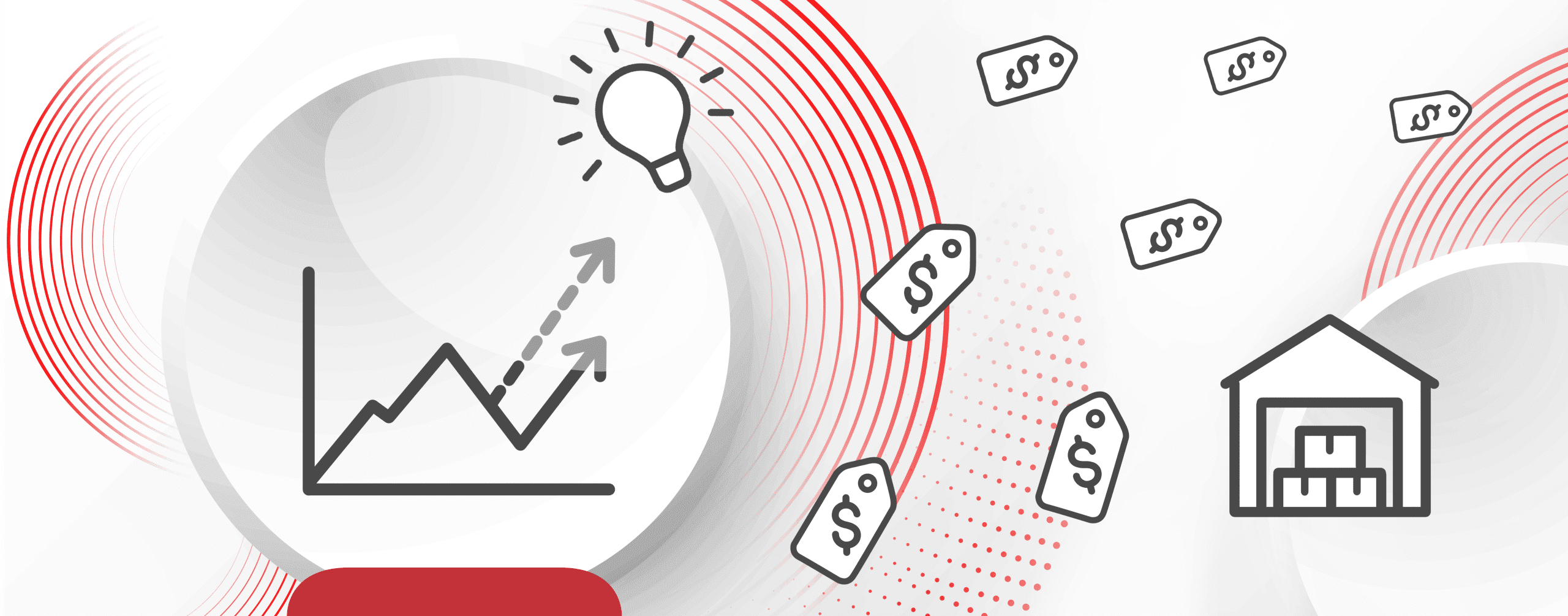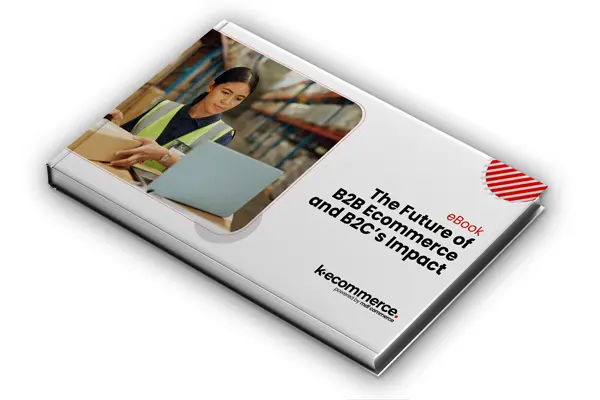
Predictive Inventory Power: A Smarter Approach to Price Volatility and Buyer Caution
Laura
Buzin

The first half of 2025 has been turbulent, to say the least. Supply chain disruptions, price instability, and policy uncertainty challenged B2B sellers in nearly every industry. H2 is already shaping up to be just as unsettled, making it impossible for companies to approach planning as usual. Instead, they must prepare for the unexpected by building nimble systems that support long-term agility.
Economic uncertainty, inflation, and potential tariff hikes are affecting procurement cycles and digital sales strategies, especially in categories like industrial goods, automotive supplies, and building materials. B2B buyers are comparing more, spending less, and asking harder questions about pricing.
That’s where predictive inventory planning comes in. When you combine ERP data with forecasting tools that actually keep up, you can move from reacting to uncertainty to planning around it. With so many variables affecting global business, what matters most is having the visibility and flexibility to stay ahead.
Procurement Is Starting Earlier
You may have noticed customers requesting Q4 delivery quotes in Q2 or asking about 2026 SKUs already. That’s because procurement cycles are shifting earlier and moving faster as buyers try to lock in pricing and availability before conditions change again.
At the same time, buyers are more price-aware than ever. According to our recent survey, 84% of U.S. adults are worried tariffs will keep driving costs up over the next year. And, nearly 90% of manufacturers surveyed by CNBC said they’re seeing canceled orders as a result of consumer pullback.
That uncertainty is fueling upstream caution. Buyers are planning further ahead, scrutinizing every quote and pushing for cost transparency. For B2B suppliers, this shift demands a faster, more responsive sales and operations model — one that can handle early inquiries, adapt pricing in real time, and clearly communicate the ‘why’ behind every change.
What Real-Time Integration Actually Looks Like
Meeting buyers’ demands starts with tighter integration. You can’t move faster or respond smarter if your systems are disconnected. When ecommerce, ERP, and forecasting tools operate in silos, it forces your team to chase numbers, manually update pricing, and answer the same questions over and over.
But when those systems are connected and updated in real time, everything changes:
- You can see what’s in stock, what’s inbound, and what’s at risk across warehouses and channels.
- You get early signals when demand shifts or input costs creep up.
- Pricing updates hit the right customers without manual overrides.
- Your team spends less time explaining changes and more time executing
One global building materials supplier did exactly that using k-ecommerce’s ERP-connected platform. When tariff changes pushed up material costs mid-season, they didn’t wait to see what would happen. They pulled real-time inventory and order data, applied targeted surcharges where needed, and pushed those updates instantly through their ecommerce system.
Then they did something equally important—they let their distributors know why. Clear communication made the difference between friction and follow-through.
Your Customers Want to Understand Why
Buyers aren’t just accepting higher prices; they’re researching them and making informed decisions. Our survey found that 53% of consumers regularly look into why costs are changing, but only 14% think companies do a good job of explaining it.
That’s a missed opportunity, as 36% said they’d view a business more positively if it clearly explained that prices went up due to tariffs. Another 28% said they’d stay loyal if the company communicated transparently or offered something to soften the blow.
B2B buyers are no different. They’re managing budgets, justifying spend, and trying to make smart decisions. When your pricing and inventory systems are integrated, you’re in a better position to share accurate, timely information and keep that trust intact.
Four Steps to a Smarter Inventory Strategy
If you’re thinking about how to modernize your planning process without slowing down your team, here are a few places to start:
1. Connect your ecommerce and ERP – When these systems talk to each other, everything else moves faster. With a platform like k-ecommerce, orders get fulfilled more accurately, pricing stays current, and everyone has the same information in real time.
2. Bring in forecasting tools – AI can help you see trends before they hit your margins. Think seasonal demand, rising input costs, or unusual buying behavior. Even small signals can make a big difference when you act early.
3. Clean Up Your Product Data – According to Panorama Consulting, 64% of ERP project delays come down to bad or incomplete data. Investing a little time on this now saves your team a lot of fire drills later. With k-ecommerce’s integrated platform, your ecommerce catalog pulls directly from a single source of truth — your ERP.
4. Communicate Before the Questions Come – If you know pricing is going to shift or a product will be delayed, don’t wait to be asked. A quick email or system-triggered alert builds confidence and keeps the conversation on your terms.
Moving from Guesswork to Confidence: The Importance of Predictive Inventory Strategies
It’s clear that old processes are not effective in today’s marketplace. Static pricing models and siloed systems slow teams down when they need to move faster. But there’s good news: Companies that connect their ecommerce, ERP, and forecasting tools are already seeing the payoff.
They’re adjusting pricing with confidence, planning seasonal inventory with fewer surprises, and earning customer loyalty by being transparent and responsive.
You don’t need to overhaul everything at once. Start with areas that help the most, such as better visibility, cleaner data and tighter communication. With the right foundation, predictive planning becomes less about guessing and more about knowing.


